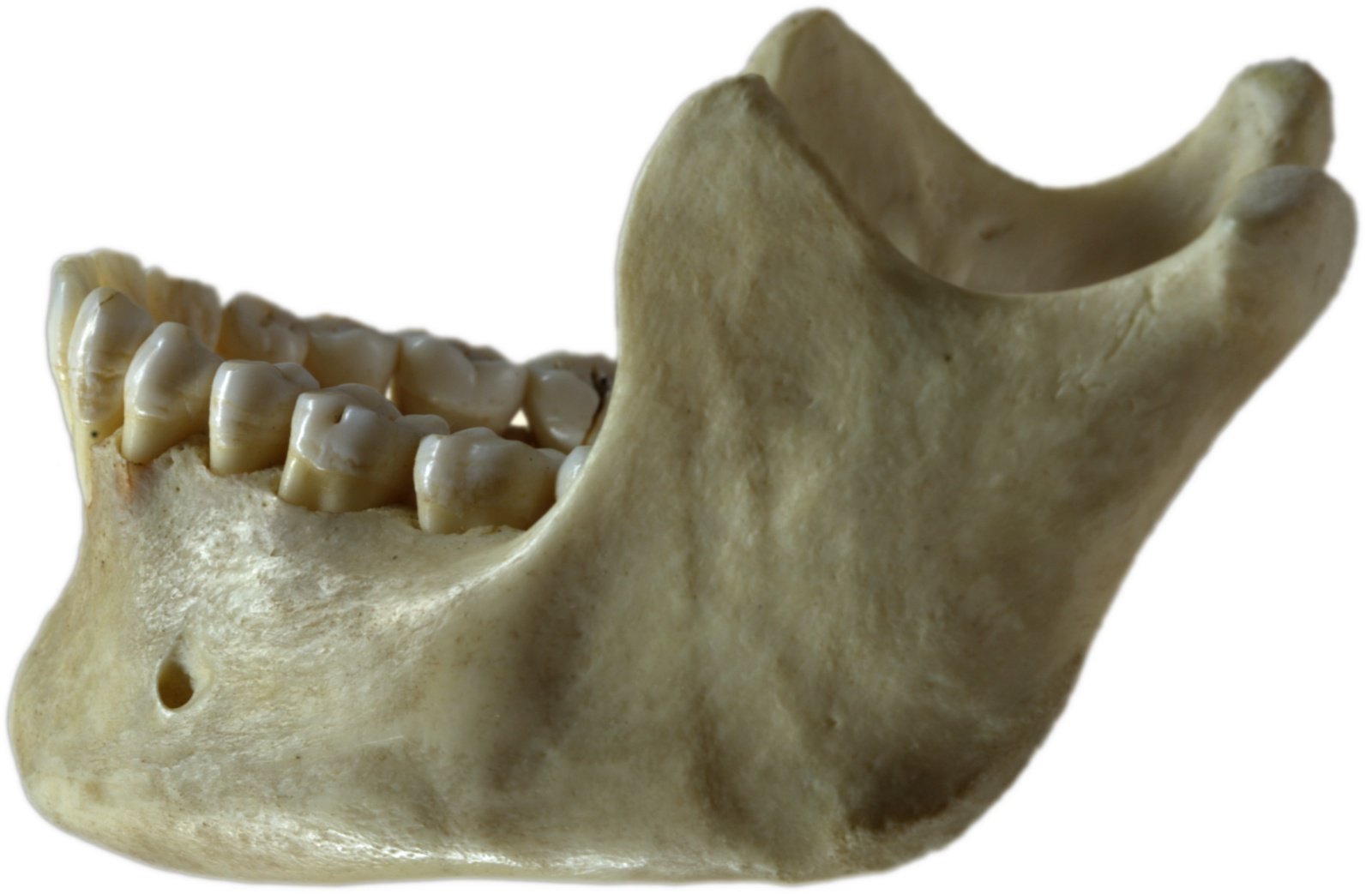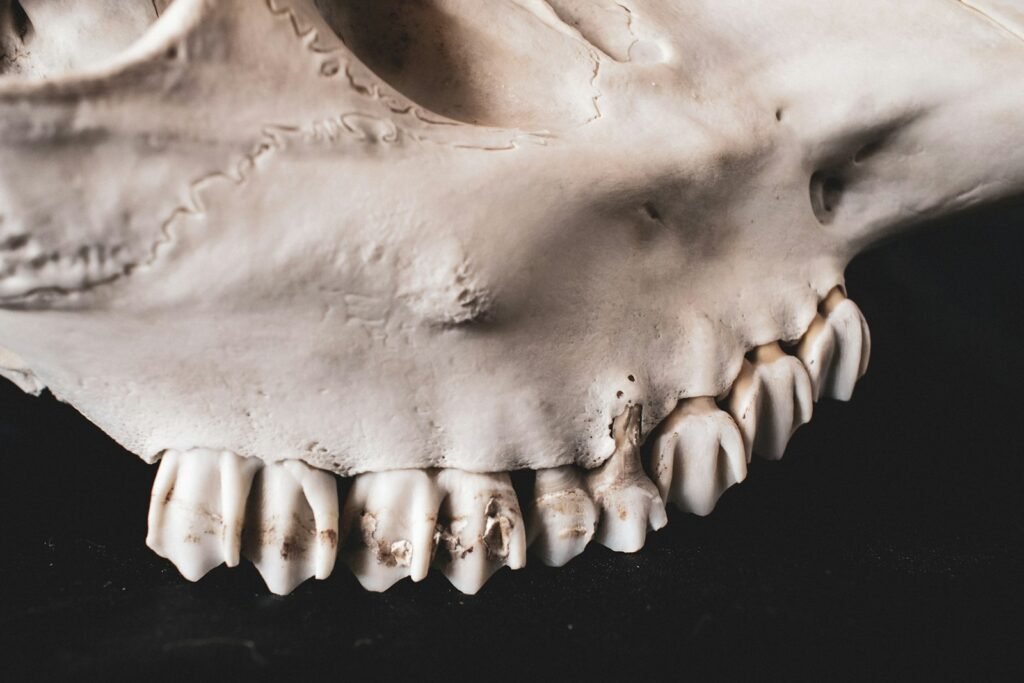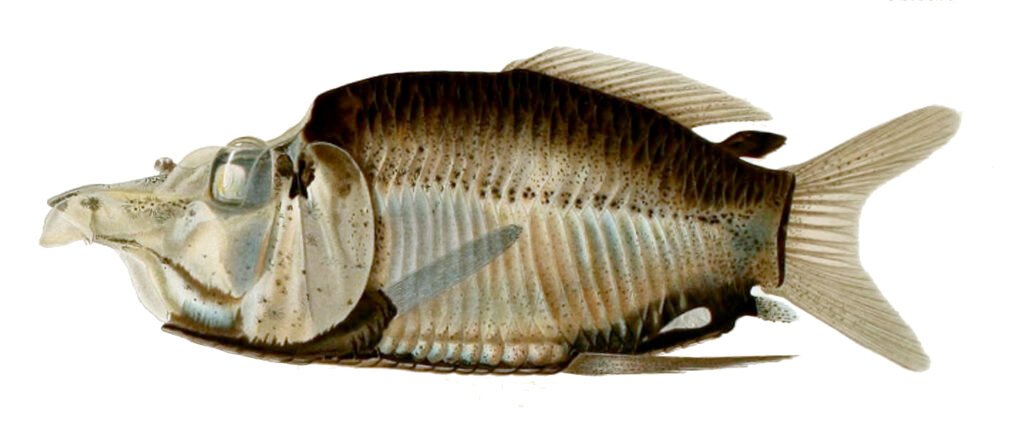Think evolution stopped when humans invented agriculture? Think again. While you’ve been scrolling through your phone, your body has been quietly adapting to a world that would be completely alien to your ancestors just a few thousand years ago. The truth is, human evolution hasn’t paused for a coffee break – it’s been running at full speed, reshaping our species in ways that might surprise you.
The Shrinking Human Jaw

Your jaw is literally getting smaller, and it’s happening faster than you might think. Over the past 10,000 years, human jaws have shrunk by about 12%, creating a modern crisis that dentists see every day. This isn’t just about aesthetics – it’s evolution in action, responding to our dramatically changed diet.
The shift from tough, fibrous foods to processed, soft meals has reduced the mechanical stress on our jaw muscles. When our ancestors spent hours chewing raw meat and tough plant fibers, they developed powerful jaw muscles that stimulated bone growth. Today’s smoothies and pasta don’t require the same jaw strength, so our facial structure is adapting accordingly.
This evolutionary change has created what scientists call a “developmental mismatch.” Our teeth haven’t shrunk at the same rate as our jaws, leading to overcrowding, impacted wisdom teeth, and the billion-dollar orthodontic industry. It’s a perfect example of how human culture can drive biological change in just a few hundred generations.
Lactose Tolerance Revolution

Here’s something that would blow your stone-age ancestor’s mind: most humans today can drink milk as adults without getting violently ill. This superpower didn’t exist 10,000 years ago, when all humans became lactose intolerant after weaning. The ability to digest lactose throughout life evolved independently in multiple populations, making it one of the fastest evolutionary changes in human history.
This genetic mutation spread like wildfire through populations that domesticated dairy animals. In Northern Europe, the Middle East, and parts of Africa, the ability to digest milk provided such a massive survival advantage that it became dominant in just a few thousand years. Those who could access the calories, protein, and nutrients in milk had better health outcomes and more surviving children.
Today, about 35% of the global population can digest lactose as adults, with rates as high as 90% in some Northern European populations. This isn’t just a dietary quirk – it’s proof that human evolution can happen remarkably quickly when there’s strong selective pressure. Your morning latte is literally a product of recent human evolution.
High-Altitude Breathing Champions

Take a deep breath and imagine trying to survive at 14,000 feet above sea level, where oxygen levels drop by 40%. For most people, this would be a nightmare of headaches, nausea, and exhaustion. But for populations in Tibet, the Andes, and Ethiopia, it’s just another day at the office.
Tibetan populations have evolved remarkable adaptations to high-altitude living in just 3,000 years – a blink of an eye in evolutionary terms. Their bodies produce more red blood cells efficiently, their blood vessels dilate more effectively, and their metabolism has adapted to function optimally in low-oxygen environments. These aren’t just cultural adaptations; they’re genetic changes that can be measured in DNA.
Perhaps most impressively, these populations have developed different evolutionary solutions to the same problem. Tibetans, Andeans, and Ethiopians all live at high altitudes, but their bodies have evolved distinct genetic pathways to handle oxygen scarcity. It’s like nature ran three separate experiments and came up with three different answers to the same question.
The Malaria Resistance Trade-off

In regions where malaria runs rampant, human evolution has crafted one of the most fascinating biological compromises in our species’ history. Sickle cell anemia, a painful genetic condition, persists in populations because carrying one copy of the gene provides powerful protection against malaria. It’s evolution’s version of a double-edged sword.
This genetic adaptation demonstrates how quickly human populations can evolve when faced with a deadly threat. In sub-Saharan Africa, the Mediterranean, and parts of Asia, the frequency of sickle cell carriers remains high because the survival advantage against malaria outweighs the risk of the disease itself. Those with one copy of the gene are like walking fortresses against one of humanity’s deadliest enemies.
Scientists estimate this adaptation occurred within the last 4,000 years, coinciding with the expansion of agriculture and the mosquito-friendly environments it created. It’s a stark reminder that human evolution often involves difficult trade-offs, and that what seems like a genetic “flaw” might actually be an evolutionary advantage in disguise.
Blue Eyes: A Recent Genetic Accident

Every single person with blue eyes on Earth shares a common ancestor who lived just 6,000 to 10,000 years ago. That’s right – blue eyes are newer than agriculture, and they spread across Europe like a genetic wildfire. This isn’t just a fun fact; it’s evidence of how rapidly cosmetic traits can evolve when they provide some kind of advantage.
The mutation that causes blue eyes occurred in a single individual, probably somewhere around the Black Sea region. From there, it spread throughout European populations so quickly that scientists are still debating what evolutionary advantage it might have provided. Some theories suggest it helped with vitamin D production in low-light environments, while others propose it was simply sexually selected because people found it attractive.
What’s remarkable is how this single genetic change created such dramatic phenotypic diversity. The same mutation that gives us blue eyes also contributes to green and hazel eye colors, demonstrating how one small genetic shift can create a cascade of visible changes. It’s evolution’s way of showing off its creative potential.
Disease Resistance in Modern Times

The Black Death didn’t just kill a third of Europe’s population – it also fundamentally changed the genetic makeup of those who survived. Modern Europeans carry genetic variants that provided resistance to plague, and these same variants are now protecting against HIV. It’s like evolution created a multi-generational insurance policy against infectious diseases.
Recent studies have identified specific genetic variants that became more common in European populations after major plague outbreaks. These variants affect immune system function, making carriers more resistant to certain bacterial infections. The twist? Some of these same genetic changes also provide protection against HIV, suggesting that evolution’s solutions often have unexpected applications.
This pattern repeats throughout human history. Populations that survived smallpox, tuberculosis, and other epidemic diseases carry genetic signatures of their ancestors’ survival. Your immune system isn’t just protecting you from current threats – it’s carrying forward the evolutionary lessons learned from centuries of disease pressure.
The Wisdom Tooth Disappearance

Your wisdom teeth are basically evolutionary leftovers, like the biological equivalent of a floppy disk. These third molars were essential when our ancestors had larger jaws and needed extra grinding power for tough, fibrous foods. Today, they’re more likely to cause problems than provide benefits, and evolution is starting to phase them out.
An increasing number of people are born without wisdom teeth entirely, a trend that’s been accelerating over the past century. In some populations, up to 35% of people are missing one or more wisdom teeth from birth. This isn’t random chance – it’s natural selection favoring individuals who don’t develop these now-troublesome molars.
The speed of this change is remarkable. In just a few hundred years, we’ve gone from needing wisdom teeth for survival to having them surgically removed as a routine procedure. It’s a perfect example of how human cultural changes can drive biological evolution, creating new selective pressures that reshape our anatomy.
Alcohol Processing Evolution

The ability to process alcohol varies dramatically between human populations, and these differences tell the story of our species’ relationship with fermentation. Some groups have evolved super-efficient alcohol metabolism, while others lack the genetic tools to handle even small amounts of alcohol safely. This isn’t just about cultural drinking habits – it’s about survival.
Populations with long histories of agriculture and fermentation have evolved enhanced alcohol dehydrogenase enzymes, allowing them to process alcohol more effectively. East Asian populations often have a variant that processes alcohol quickly but creates unpleasant side effects, possibly providing protection against alcoholism. These genetic differences developed over thousands of years of exposure to fermented foods and beverages.
The consequences of these evolutionary differences are still playing out today. Indigenous populations with no historical exposure to alcohol often lack the genetic adaptations for processing it safely, making them more vulnerable to alcohol-related health problems. It’s a sobering reminder that evolution doesn’t always prepare us for the modern world.
Changing Sleep Patterns

Human sleep patterns are evolving in response to artificial light, and the changes are happening fast enough to observe within families. Your circadian rhythms are different from your great-grandparents’, adapted to a world that never truly goes dark. This isn’t just about staying up late – it’s about fundamental changes in how our bodies respond to light and darkness.
Studies show that people living in areas with heavy light pollution have shifted their natural sleep-wake cycles, with genetic changes in clock genes becoming more common. These variants help people function better in environments with artificial lighting, but they also come with trade-offs in terms of sleep quality and duration. Evolution is trying to help us adapt to our 24/7 world.
The speed of this adaptation is unprecedented in human evolutionary history. In just 150 years since the invention of the electric light bulb, we’ve begun to see measurable genetic changes in how our bodies process light signals. It’s like watching evolution in fast-forward, responding to one of the most dramatic environmental changes in human history.
Brain Size Reduction

Here’s a fact that might blow your mind: human brains have been shrinking for the past 10,000 years. Our ancestors had brains that were about 10% larger than ours, and scientists are still debating whether this represents evolution or devolution. The truth is probably more complex than either extreme suggests.
Some researchers argue that smaller brains are actually more efficient, requiring less energy to maintain while still providing the same cognitive capabilities. Others suggest that the development of complex societies and external storage of information (like writing) has reduced the need for large individual brain capacity. It’s possible that we’re trading raw processing power for energy efficiency.
The timing of this change coincides with the development of agriculture and civilization, suggesting that cultural evolution and biological evolution are interconnected. As humans began living in larger groups and developing specialized roles, the selective pressure for large individual brain capacity may have decreased. We’re becoming more collectively intelligent while becoming individually smaller-brained.
Skin Color Adaptations

Human skin color is one of the most visible examples of recent evolution, changing dramatically as populations migrated to different latitudes. These changes happened remarkably quickly – light skin evolved in Europeans within the last 8,000 years, while dark skin provided crucial protection for populations living near the equator. It’s evolution’s way of creating natural sunscreen.
The genetic changes responsible for skin color variation involve multiple genes that affect melanin production. As humans migrated out of Africa, those who moved to higher latitudes faced a trade-off: they needed lighter skin to produce vitamin D in low-light environments, but they also lost some natural protection against UV radiation. Different populations found different solutions to this challenge.
What’s fascinating is how quickly these changes occurred. In just a few hundred generations, human populations developed dramatically different skin pigmentation levels. It’s proof that when environmental pressures are strong enough, human evolution can happen at a pace that’s visible within recorded history.
Dietary Enzyme Evolution

Your digestive system is a living museum of human evolutionary history, with enzymes that tell the story of what your ancestors ate. Populations that relied heavily on starchy foods have evolved more copies of amylase genes, allowing them to digest starches more efficiently. It’s like evolution gave different groups specialized digestive superpowers.
Japanese populations have evolved unique enzymes to digest seaweed, while Arctic populations have adaptations for processing high-fat diets. These changes occurred within the last few thousand years, as different human groups adapted to local food sources. Your stomach is literally shaped by the eating habits of your ancestors.
The speed of these digestive adaptations demonstrates how quickly human evolution can respond to dietary changes. As populations adopted new food sources, those with genetic variants that could better process these foods had survival advantages. It’s ongoing evolution that continues today as global diets become more homogenized.
Cold Weather Adaptations

Populations living in extreme cold have evolved remarkable adaptations that go far beyond just wearing warmer clothes. Inuit populations have genetic variants that help them metabolize fats more efficiently, generate more body heat, and maintain circulation in freezing temperatures. These aren’t just cultural adaptations – they’re biological changes that can be measured in DNA.
The most striking example is the evolution of brown fat, a special type of tissue that generates heat by burning calories. Populations from cold climates have more brown fat and genetic variants that make it more efficient. It’s like evolution installed a biological heating system in people who needed it most.
These adaptations occurred within the last 15,000 years, as human populations spread into Arctic regions. The genetic changes affect everything from circulation patterns to metabolic rates, showing how comprehensively evolution can reshape human physiology when faced with extreme environmental challenges.
Immune System Modifications

Your immune system carries the genetic memory of every major disease your ancestors survived, and it’s still evolving to face new threats. Recent studies have identified genetic variants that provide protection against autoimmune diseases, while others help fight off new pathogens. It’s like your body is running a continuous software update to stay ahead of evolving threats.
The most dramatic example is the evolution of HIV resistance in some populations. Certain genetic variants that originally protected against plague now provide partial protection against HIV infection. Evolution doesn’t create new solutions from scratch – it repurposes existing genetic tools for new challenges.
Modern medical treatments are also creating new selective pressures. As we develop better treatments for genetic diseases, the evolutionary pressure against these conditions may decrease. At the same time, new environmental toxins and pollutants are creating fresh challenges that our immune systems must adapt to address.
Modern Stress Response Evolution

The human stress response system evolved for immediate physical threats, but modern life presents chronic psychological stressors that our ancient biology wasn’t designed to handle. Surprisingly, some populations are beginning to show genetic adaptations to chronic stress, with variants that help regulate cortisol levels and reduce inflammation.
Studies of populations that have faced generations of trauma and stress have identified genetic changes that seem to provide protection against stress-related diseases. These variants affect how the body responds to stress hormones, potentially making individuals more resilient to chronic stressors. It’s evolution’s attempt to help us cope with modern life.
The implications of stress-related evolution are still being studied, but early findings suggest that extreme stress can create selective pressure for genetic variants that provide protection. It’s a sobering reminder that human evolution continues to respond to the challenges we create for ourselves.
Digital Age Finger Dexterity

While it might seem premature to talk about smartphone-related evolution, some researchers are beginning to document changes in hand and finger development among populations with heavy technology use. Children who grow up using touchscreens and keyboards show different patterns of finger dexterity and hand coordination than previous generations.
These changes might not be genetic yet, but they demonstrate how quickly human development can respond to new environmental pressures. The fine motor skills required for typing and swiping are different from those needed for traditional manual tasks, and our bodies are adapting accordingly.
It’s too early to say whether these changes represent true evolutionary adaptation, but they provide a glimpse into how modern technology might shape future human evolution. The hands that built stone tools are now adapting to navigate digital interfaces, showing evolution’s endless creativity in responding to new challenges.
The Future of Human Evolution

Human evolution isn’t slowing down – it’s accelerating. With global travel, changing diets, new technologies, and environmental challenges, our species faces more evolutionary pressures than ever before. The changes we’re seeing today are just the beginning of a new chapter in human evolutionary history.
Climate change, urbanization, and technological advancement are creating new selective pressures that will shape our species’ future. Some populations may develop better heat tolerance, while others might evolve enhanced disease resistance or improved cognitive abilities. The next few thousand years promise to be among the most evolutionary active in human history.
What makes modern human evolution unique is our awareness of it happening. For the first time in our species’ history, we can observe, measure, and potentially influence our own evolutionary trajectory. The question isn’t whether humans will continue evolving – it’s what we’ll become and whether we’ll have any say in the process.
Conclusion

Human evolution hasn’t stopped – it’s adapted to the modern world with the same creativity and speed that carried our species out of Africa and across the globe. From shrinking jaws to changing sleep patterns, from lactose tolerance to high-altitude breathing, we’re witnessing evolution in real-time. These changes remind us that humans aren’t separate from nature – we’re part of an ongoing biological story that continues to unfold.
The next time you drink a glass of milk, stay up late under artificial lights, or visit your dentist about crowded teeth, remember that you’re experiencing the results of recent human evolution. Our bodies carry the genetic signatures of our ancestors’ survival, and they’re still adapting to the world we’re creating today.
What aspects of modern life do you think will drive the next wave of human evolution?




